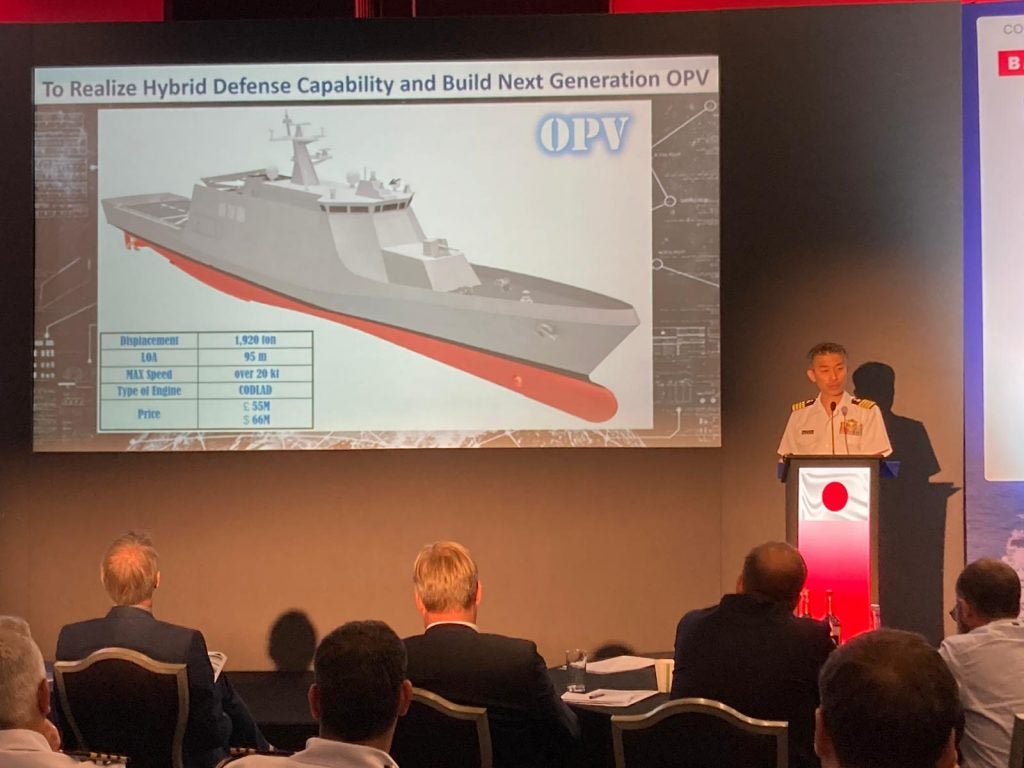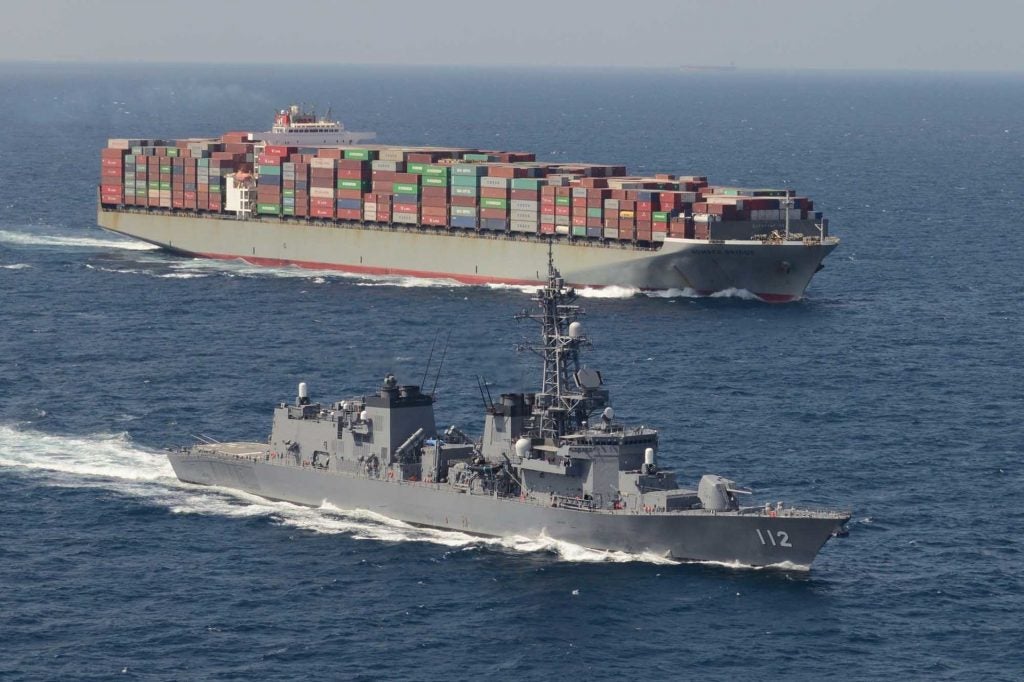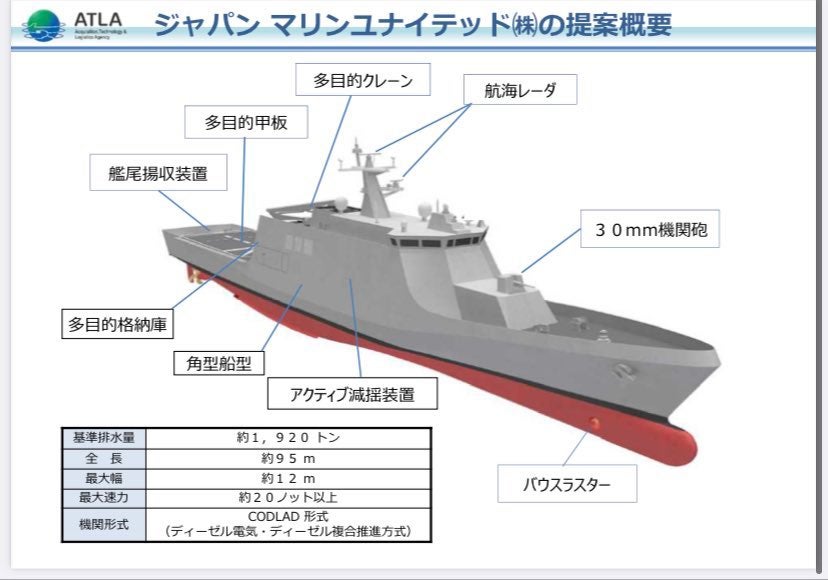Japan Marine United to build Future Offshore Patrol Vessels for Japan
On July 27, Captain Yokota of the Japan Maritime Self Defense Force spoke at the International Conference on Offshore Patrol Vessels, elaborating on the details regarding the JMSDF’s future Offshore Patrol Vessels, after the recent Ministry of Defense announcement of Japan Marine United’s design proposal winning the contract for twelve such vessels and a meeting with Brigadier Forbes of the Royal Navy, discussing the continued military partnership of the two island monarchies.

Regarding the Vessel’s Design:
- Standard Displacement: 1920 tons
- Length: 95 metres
- Beam: 12 metres
- Main Armament: one 30mm naval gun
- Propulsion is handled by a CODLAD (combined diesel-electric and diesel) drivetrain, allowing for speeds in excess of 20 knots.
- One each multipurpose crane and flight facilities
The nearly 2000 tons of displacement puts the new patrol vessel in the tonnage range similar to Royal Navy’s River Class or Danish Knud Rasmussen class but the singular 30mm cannon and no facilities for missiles firmly cements this class’s role as a peacetime patrol implement. Within the materials available to the public, the Ministry of Defense gave significant emphasis to the lifetime costs and automation the proposals were capable of, and formed a significant part of their rationale in selecting Japan Marine United over the Mitsubishi Heavy Industries design for the class.
With a standard crew of 30 and a easily maintained design, the austere ship design allows a Japanese presence across Japan’s remote archipelagos at a cheaper cost and improve on their fleet’s monitoring capacity. The twelve ships of the class will relieve and supplement current auxiliary vessels sent to monitor Chinese and Russian passages near Japanese waters, allowing quicker reactions to contingencies with its 20 knots speed compared to the 15 knots maximum of the current generation of entirely unarmed auxiliaries, extending the reach of the Force with the reduced need for supplies and larger facilities, allowing operation in adverse weather and improvement to crew morale in the multi-day missions.

The diminutive armament of one cannon similarly is highly suited to the close standoffs which occurs in these situations without over-arming the class and driving up costs. By employing more numerous and cheaper vessels, the Japan Maritime Self Defense Force most importantly avoids overworking their main fleet with trivial monitoring missions where the patrol vessel would suffice, cutting down on maintenance time and improving their readiness should push come to shove.

